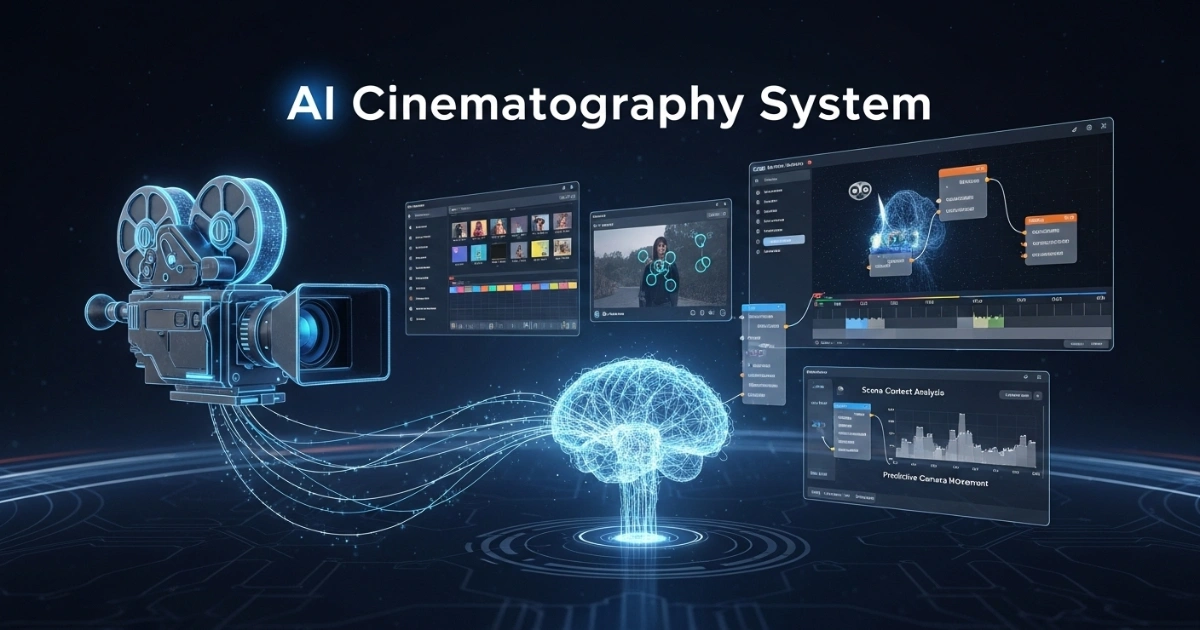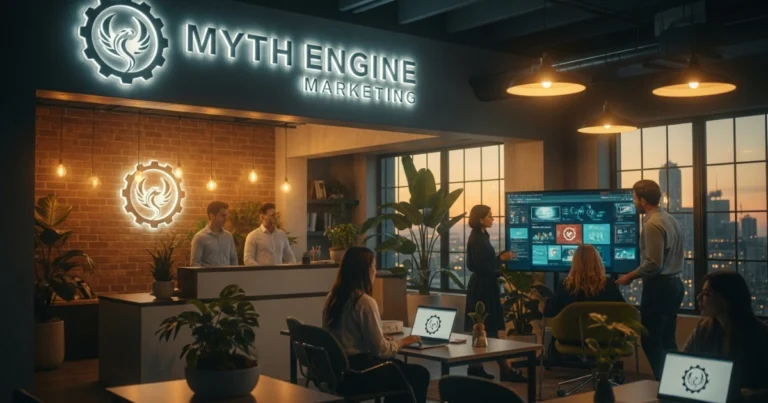AI Cinematography System: Future of Filmmaking

Contents
- 1 What Is an AI Cinematography System?
- 2 How AI Cinematography Systems Work
- 3 Applications of AI Cinematography Systems in Filmmaking
- 4 Benefits of AI Cinematography Systems
- 5 Challenges of AI Cinematography Systems
- 6 The Future of AI Cinematography Systems
- 7 Case Studies: AI Cinematography in Action
- 8 How to Get Started with AI Cinematography Systems
The AI cinematography system is reshaping the landscape of filmmaking, offering innovative solutions that blend technology with creativity. As artificial intelligence continues to evolve, its integration into cinematography has unlocked new possibilities for directors, cinematographers, and editors. By automating complex tasks, enhancing visual storytelling, and streamlining production processes, AI is becoming an indispensable tool in the film industry. This article explores the transformative impact of AI cinematography systems, diving into their applications, benefits, challenges, and future potential. With a focus on maximizing efficiency and creativity, we’ll uncover how these systems are revolutionizing filmmaking for professionals and amateurs alike.
What Is an AI Cinematography System?
An AI cinematography system refers to advanced software or hardware powered by artificial intelligence, designed to assist or automate various aspects of filmmaking. These systems leverage machine learning, computer vision, and data analytics to perform tasks such as camera operation, shot composition, lighting adjustments, and post-production editing. Unlike traditional cinematography, which relies heavily on human expertise, AI systems analyze vast datasets to make real-time decisions, ensuring precision and consistency.
For instance, AI can track subjects, adjust focus, or suggest camera angles based on predefined artistic parameters. Additionally, these systems can learn from existing films, enabling them to replicate specific styles or genres. By combining technical precision with creative flexibility, AI cinematography systems empower filmmakers to push boundaries while saving time and resources.
How AI Cinematography Systems Work
AI cinematography systems operate through a combination of sophisticated technologies. Here’s a breakdown of their core components:

1. Computer Vision
Computer vision enables AI systems to “see” and interpret visual data. By analyzing frames in real time, these systems can identify objects, track movements, and adjust camera settings accordingly. For example, an AI-powered drone can follow a moving subject while maintaining optimal framing and focus.
2. Machine Learning Algorithms
Machine learning allows AI systems to learn from vast datasets, such as film archives or user inputs. By studying cinematographic techniques, these algorithms can suggest shot compositions, predict audience reactions, or even generate storyboards based on a script.
3. Real-Time Processing
AI cinematography systems process data instantly, making them ideal for live shoots. Whether adjusting lighting or stabilizing footage, these systems ensure seamless execution without the need for constant human intervention.
4. Integration with Hardware
Many AI systems are integrated with cameras, drones, or robotic arms. These devices execute AI-driven commands, such as panning, tilting, or zooming, with unparalleled precision. Some systems even use augmented reality (AR) to provide real-time visual feedback to cinematographers.
By combining these technologies, AI cinematography systems streamline workflows, reduce errors, and enhance creative output. Consequently, filmmakers can focus on storytelling rather than technical complexities.
Applications of AI Cinematography Systems in Filmmaking
AI cinematography systems are versatile, finding applications across various stages of film production. Below, we explore their key uses:

1. Automated Camera Operation
AI-powered cameras and drones can autonomously track subjects, adjust angles, and maintain focus. For example, during action scenes, an AI system can follow fast-moving objects, ensuring smooth and dynamic shots. This automation reduces the need for large camera crews, saving time and costs.
2. Shot Composition and Framing
AI systems analyze visual aesthetics to suggest or execute shot compositions. By studying classic films or user preferences, they can recommend framing styles that align with a project’s vision. For instance, an AI might suggest a wide-angle shot for a dramatic landscape or a close-up for emotional intensity.
3. Lighting Optimization
Lighting is critical in cinematography, and AI systems excel at optimizing it. By analyzing a scene’s mood and context, AI can adjust lighting setups in real time, ensuring consistency across shots. This is particularly useful in outdoor shoots, where natural light changes rapidly.
4. Post-Production Editing
AI cinematography systems streamline post-production by automating tasks like color grading, scene transitions, and special effects. For example, AI can enhance low-light footage, remove unwanted objects, or apply filters to match a specific aesthetic. As a result, editors can complete projects faster without compromising quality.
5. Virtual Cinematography
In virtual production, AI systems integrate with game engines like Unreal Engine to create real-time, photorealistic environments. These systems allow filmmakers to visualize scenes before shooting, reducing the need for costly reshoots. Additionally, AI can simulate camera movements within virtual sets, offering endless creative possibilities.
6. Personalized Content Creation
AI cinematography systems can generate tailored content for specific audiences. By analyzing viewer preferences, these systems can suggest edits or shots that resonate with target demographics, enhancing engagement.
These applications demonstrate how AI cinematography systems enhance efficiency, creativity, and accessibility in filmmaking. As technology advances, their capabilities will only expand, opening new avenues for innovation.
Benefits of AI Cinematography Systems
The adoption of AI cinematography systems offers numerous advantages for filmmakers. Here are the key benefits:

1. Increased Efficiency
AI automates repetitive tasks, such as camera adjustments or editing, allowing filmmakers to focus on creative decisions. This efficiency reduces production timelines and costs, making filmmaking more accessible to independent creators.
2. Enhanced Creativity
By providing real-time suggestions and automating technical tasks, AI systems free filmmakers to experiment with bold ideas. For example, AI can generate multiple shot variations, giving directors more options to explore.
3. Cost Savings
Traditional filmmaking requires large crews and expensive equipment. AI cinematography systems reduce these costs by automating tasks and minimizing the need for reshoots. For instance, AI-powered drones eliminate the need for costly crane shots.
4. Consistency and Precision
AI systems deliver consistent results, ensuring that every shot aligns with the project’s vision. Their precision in tracking, framing, and lighting reduces errors that often plague manual processes.
5. Accessibility for Amateurs
AI democratizes filmmaking by enabling beginners to produce professional-quality content. With user-friendly interfaces and automated features, AI systems lower the barrier to entry for aspiring filmmakers.
These benefits make AI cinematography systems a game-changer, empowering filmmakers to create high-quality content with fewer resources.
Challenges of AI Cinematography Systems
Despite their advantages, AI cinematography systems face several challenges that must be addressed for widespread adoption:

1. High Initial Costs
While AI systems reduce long-term costs, their initial setup can be expensive. High-end AI-powered cameras, drones, and software require significant investment, which may deter small-scale filmmakers.
2. Learning Curve
Although AI systems simplify many tasks, mastering their features requires technical knowledge. Filmmakers must invest time in learning how to integrate AI tools effectively into their workflows.
3. Creative Limitations
AI systems rely on data and algorithms, which may limit their ability to replicate human intuition or spontaneity. Over-reliance on AI could lead to formulaic or predictable visuals, diminishing artistic originality.
4. Ethical Concerns
The use of AI in filmmaking raises ethical questions, such as job displacement for camera operators and editors. Additionally, AI-generated content may blur the line between authenticity and manipulation, raising concerns about creative ownership.
5. Technical Limitations
AI systems are not flawless. They may struggle with complex scenes, unpredictable environments, or nuanced artistic preferences. For example, an AI might misinterpret a director’s vision, leading to suboptimal results.
Addressing these challenges will be crucial for maximizing the potential of AI cinematography systems. As technology evolves, many of these limitations are likely to diminish, paving the way for broader acceptance.
The Future of AI Cinematography Systems
The future of AI cinematography systems is bright, with advancements poised to further transform filmmaking. Here are some trends to watch:

1. Improved AI Algorithms
As machine learning models become more sophisticated, AI systems will better understand complex artistic nuances. This will enable them to generate more creative and contextually relevant suggestions.
2. Integration with Virtual Reality (VR) and Augmented Reality (AR)
AI cinematography systems will increasingly integrate with VR and AR, enabling immersive filmmaking experiences. Directors could use AI to manipulate virtual environments in real time, creating dynamic and interactive narratives.
3. Real-Time Collaboration
Future AI systems will facilitate seamless collaboration between global teams. By analyzing inputs from multiple users, these systems could suggest edits or shots that align with a shared creative vision.
4. Personalized Filmmaking
AI will enable hyper-personalized content creation, tailoring films to individual viewer preferences. For example, an AI system could generate alternate endings based on audience data, enhancing engagement.
5. Sustainability in Filmmaking
AI cinematography systems can reduce the environmental impact of filmmaking by minimizing travel, optimizing resources, and streamlining production. This aligns with the industry’s growing focus on sustainability.
As these trends unfold, AI cinematography systems will become even more integral to the filmmaking process, offering unprecedented creative and technical possibilities.
Case Studies: AI Cinematography in Action
To illustrate the impact of AI cinematography systems, let’s explore a few real-world examples:
1. AI-Powered Drones in Blockbuster Films
Major films like Top Gun: Maverick have used AI-powered drones to capture high-speed aerial shots. These drones, equipped with AI cinematography systems, tracked fighter jets with precision, delivering breathtaking visuals that would have been impossible with traditional methods.
2. Virtual Production in The Mandalorian
Disney’s The Mandalorian leveraged AI-driven virtual production to create immersive environments. By integrating AI with Unreal Engine, the production team visualized scenes in real time, reducing the need for physical sets and costly reshoots.
3. Indie Filmmakers and AI Tools
Independent filmmakers are increasingly using AI tools like Adobe Premiere Pro’s AI features for automated editing. These tools analyze footage to suggest cuts, transitions, and effects, enabling small teams to produce polished content on a budget.
These case studies highlight how AI cinematography systems are transforming both big-budget and independent filmmaking, making high-quality production more accessible.
How to Get Started with AI Cinematography Systems
For filmmakers eager to embrace AI cinematography systems, here’s a step-by-step guide:

1. Research Available Tools
Explore AI-powered tools like DJI drones, Blackmagic Design cameras, or software like Adobe Premiere Pro and DaVinci Resolve. These platforms offer user-friendly AI features for beginners and professionals.
2. Invest in Training
Take online courses or tutorials to understand how AI systems integrate with filmmaking workflows. Platforms like Coursera and Udemy offer relevant training.
3. Start Small
Begin with simple AI tools, such as automated editing software or AI-powered drones. Experiment with their features on small projects to build confidence.
4. Collaborate with AI
Use AI as a creative partner, not a replacement. Combine its suggestions with your artistic vision to create unique and compelling content.
5. Stay Updated
AI technology evolves rapidly. Follow industry blogs, attend webinars, and join filmmaking communities to stay informed about the latest advancements.
By following these steps, filmmakers can harness the power of AI cinematography systems to elevate their craft.
Conclusion
The AI cinematography system is revolutionizing filmmaking by automating complex tasks, enhancing creativity, and reducing costs. From automated camera operations to virtual production, these systems are transforming every stage of the filmmaking process. While challenges like high costs and creative limitations exist, the benefits of efficiency, precision, and accessibility far outweigh them. As AI technology continues to advance, its integration with VR, AR, and personalized content creation will unlock new possibilities for filmmakers. Whether you’re a seasoned professional or an aspiring creator, now is the perfect time to explore AI cinematography systems and embrace the future of filmmaking.






